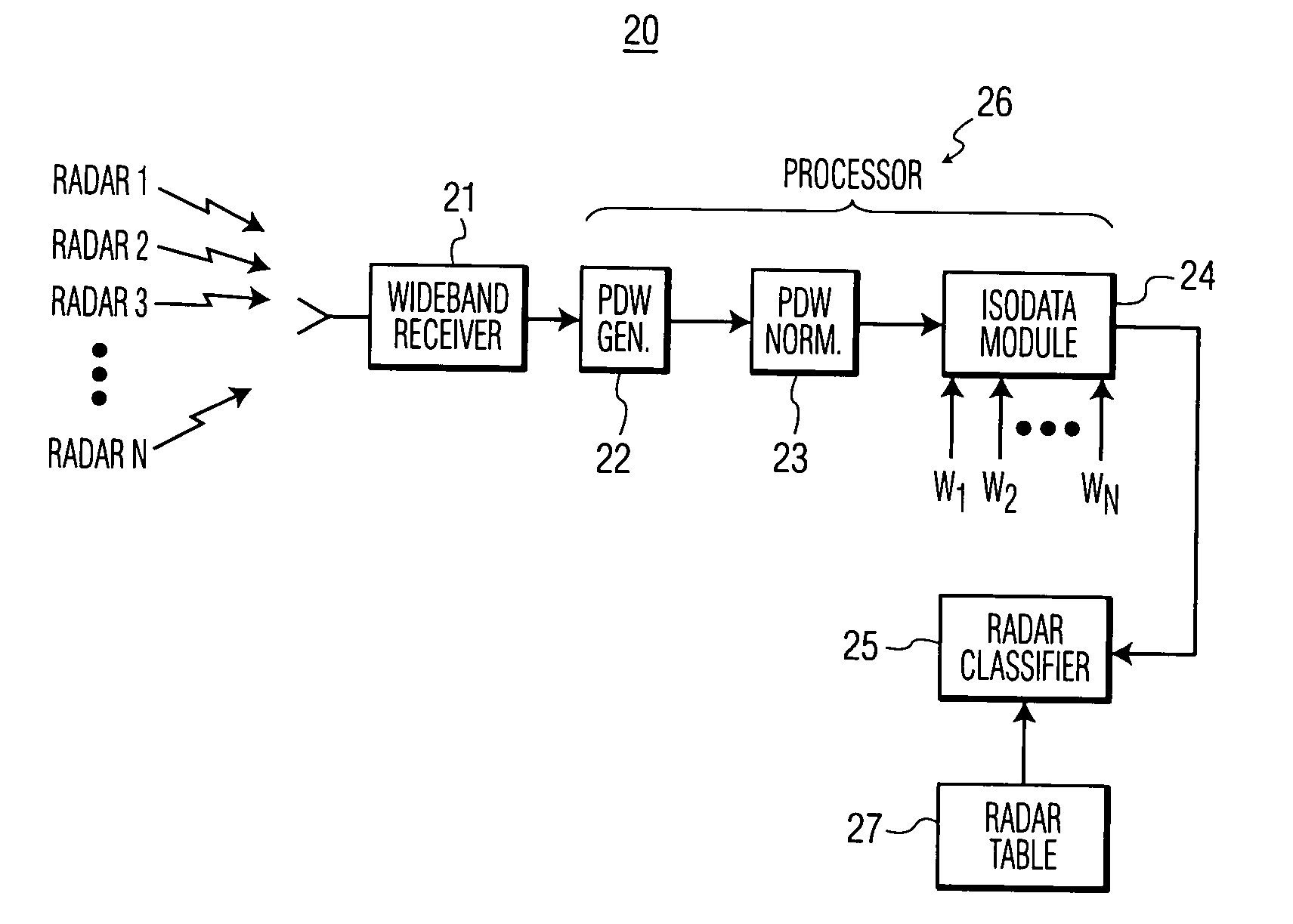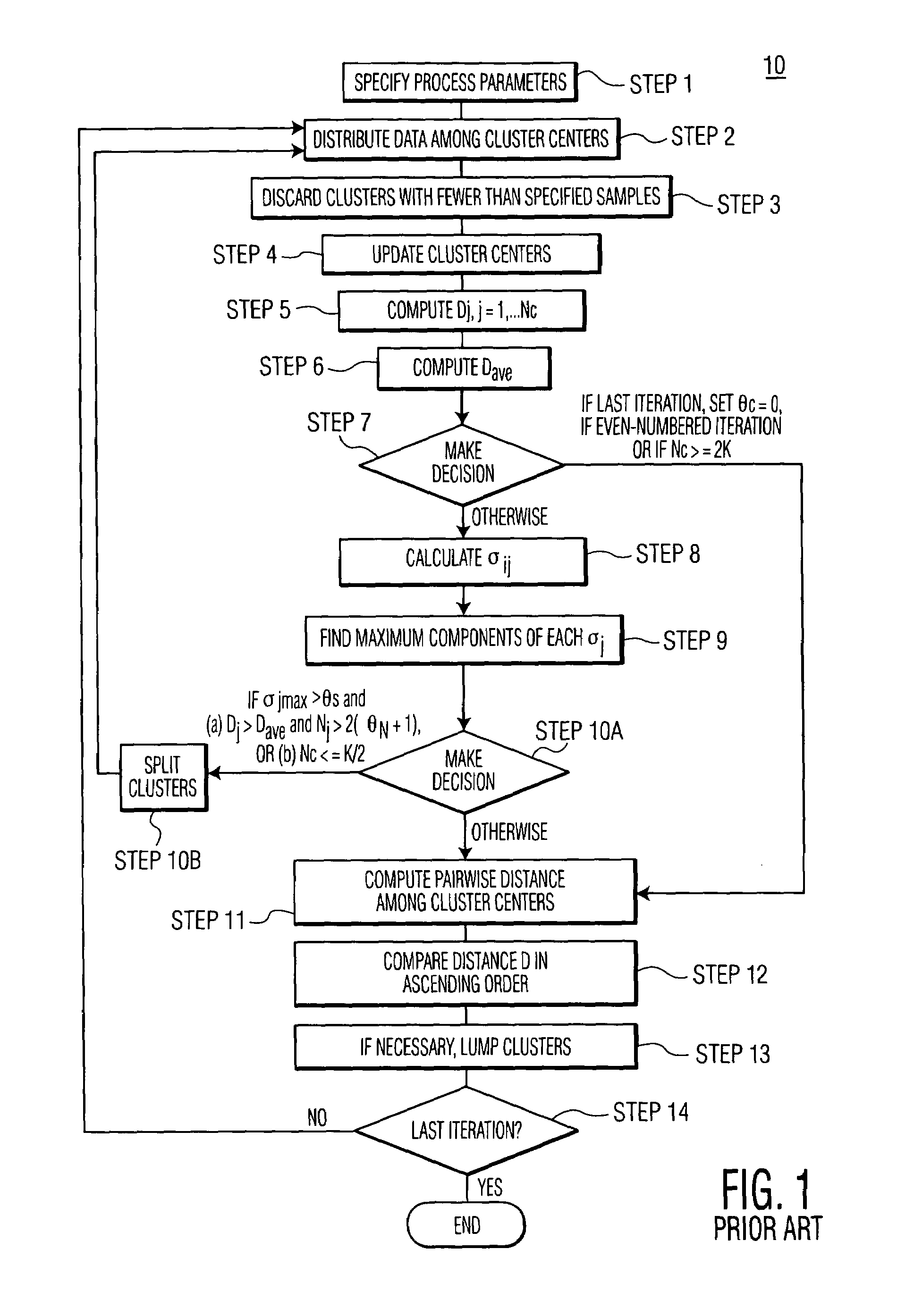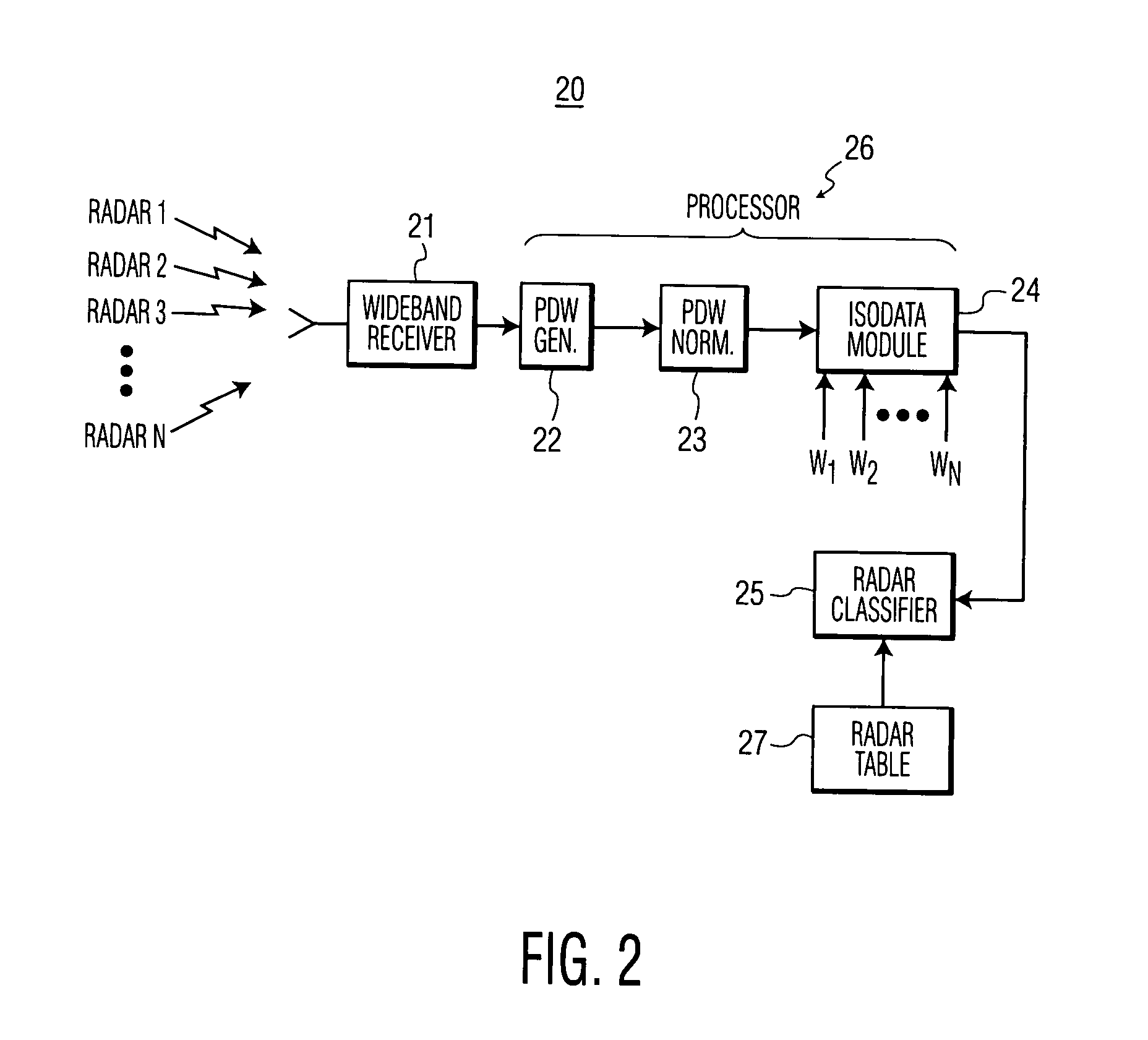Method of radar pattern recognition by sorting signals into data clusters
- Summary
- Abstract
- Description
- Claims
- Application Information
AI Technical Summary
Problems solved by technology
Method used
Image
Examples
Embodiment Construction
[0021]The present invention provides an unsupervised iterative classification method for radar pattern recognition. The method is self-organizing and requires minimal input from human interaction.
[0022]The method of the invention forms clusters from a set of input data (samples), where each cluster consists of very similar data (samples). The method first defines a measure of pattern similarity and establishes a rule for assigning individual samples to the domain of a specific cluster center. The invention uses the Euclidean distance between two data points x and z,
D=∥x−z∥
as a measure of pattern similarity. The smaller the distance, D, the greater is the similarity between x and z.
[0023]After a measure of pattern similarity is selected, the method of the invention sorts (or partitions) samples into cluster domains. The Euclidean distance measure, D, lends itself to this procedure, because it is a good measure of proximity. However, because the proximity of two patterns is a relative...
PUM
 Login to View More
Login to View More Abstract
Description
Claims
Application Information
 Login to View More
Login to View More - R&D
- Intellectual Property
- Life Sciences
- Materials
- Tech Scout
- Unparalleled Data Quality
- Higher Quality Content
- 60% Fewer Hallucinations
Browse by: Latest US Patents, China's latest patents, Technical Efficacy Thesaurus, Application Domain, Technology Topic, Popular Technical Reports.
© 2025 PatSnap. All rights reserved.Legal|Privacy policy|Modern Slavery Act Transparency Statement|Sitemap|About US| Contact US: help@patsnap.com



